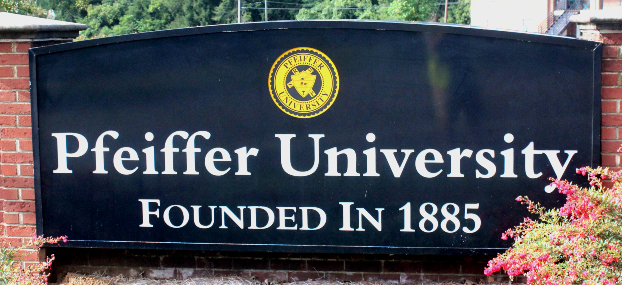Pfeiffer program hosts disaster, poverty simulations
Published 3:27 pm Thursday, April 25, 2024

- Misenheimer, North Carolina
|
Getting your Trinity Audio player ready...
|
By Emma Kate West, for Pfeiffer University
Simulation offers students an opportunity to make high-risk decisions in a no-risk environment. It is considered a valuable teaching tool, and during April Pfeiffer’s nursing program hosted a two-day disaster and poverty simulation series on campus.
“There is no substitute for simulated training experiences,” said Dr. Martha Bramlett, chair of the Department of Nursing. “These real-life scenarios give our students the opportunity to learn and think critically and develop clinical judgement. Simulation allows us to do this in a safe environment where students can make mistakes and learn from them without risk.”
The Disaster Simulation, a bombing scenario which occurred on April 4, unfolded on the lawn of Stokes Student Center in Misenheimer.
Nursing students were called to the scene where they conducted assessment and victim triage. Volunteers simulated a variety of traumatic injuries that required student nurses to utilize clinical decision-making skills as they assessed and categorized injuries. As they observed, faculty are able to identify areas of strength as well as gaps in understanding and areas of opportunity.
Kennise Brown (Class of 2024) has volunteered with the nursing department several times during her time at Pfeiffer.
“I like acting, I like being dramatic, so it was a lot of fun to be able to help my nursing major friends gain vital experience before they are entrusted with the care of a real patient who is injured,” she said.
On April 5, in collaboration with student and community volunteers, the nursing department presented a poverty simulation designed to help students develop a better understanding of the challenges faced by low-income families.
Participants in the exercise are assigned to a “family,” and each family must attempt to survive on a limited income over a simulated month-long period. Participants find themselves dealing with unexpected, catastrophic expenses, such as car breakdowns or unanticipated illness. In some cases, participants must choose between buying essential medications and groceries.
“The poverty simulation gives nursing students a deeper understanding of the complex barriers to health care experienced by those who live in poverty. The experience helps our students to better understand the obstacles faced by many of their future clients, and it helps them develop a greater awareness and empathy that is extremely valuable in providing effective and compassionate care in professional practice,” Bramlett said.
Following the simulation activity, participants reflected on the experience and discussed the nuances of healthcare and poverty. Many participants realized that they may have had misconceptions about poverty and developed a new perspective.
Ultimately, the goal of the exercise is to provide nursing students with a better understanding of the social and economic determinants of health so that they can help meet the needs of all patients, regardless of their socioeconomic background.
“The poverty simulation made a profound impact on me as a nursing student. I have learned a lot in class about the healthcare issues those living in poverty face, but this simulated first-hand experience has really opened my eyes to the complexities of these issues. I will take this experience with me and be a better nurse for it,” said Hailey Barnes (Class of 2027).




